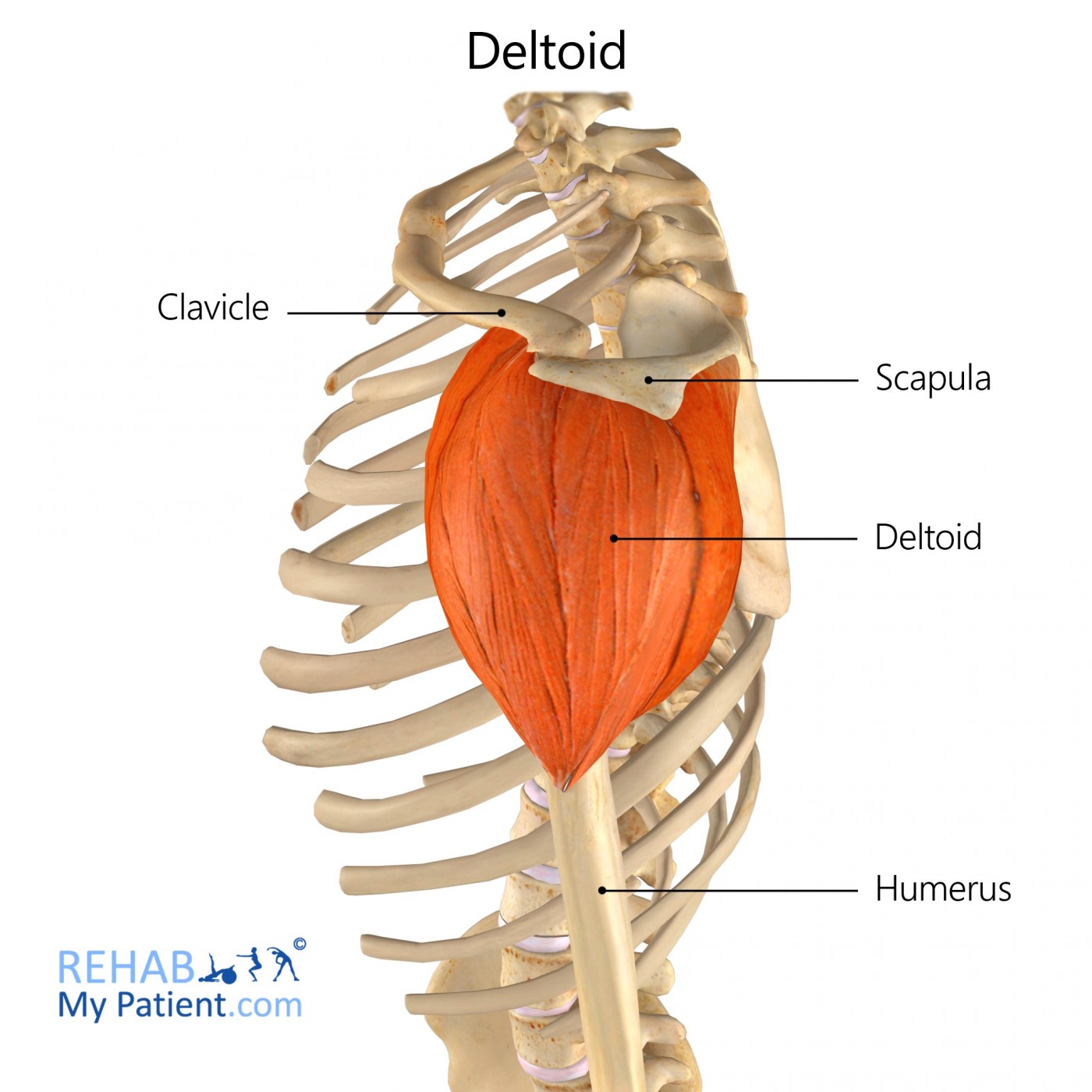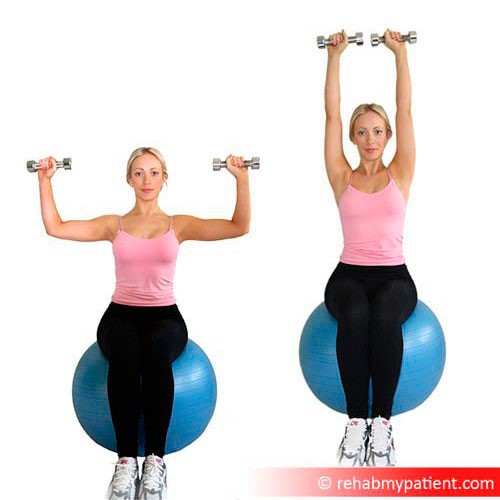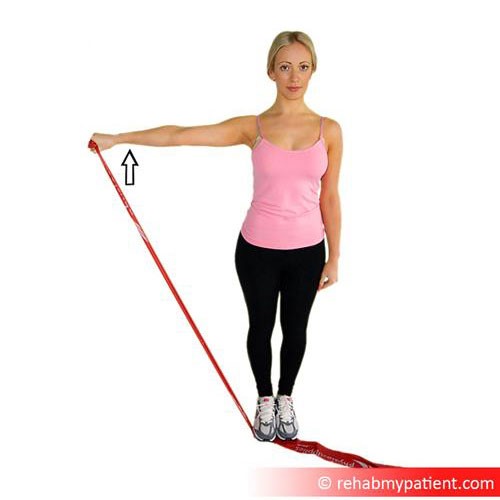
General information
The deltoid muscle, otherwise known as the common shoulder muscle, forms the rounded contour of the shoulder. It consists of several sets of fibres which are independently controlled by the nervous system. It is less commonly known as the deltoideus muscle.
Literal meaning
The triangular shaped muscle.
Interesting information
Depending on the specific part and position of the humerus, the deltoid parts interact synergistically or antagonistically. The acromial part of the deltoid initiates shoulder abduction. The clavicular (anterior) and spinal (posterior) parts are adductors up to 60° and abductors beyond 60°. The posterior part also extends the shoulder, the anterior part flexes the shoulder. The deltoid muscle also prevents dislocation of the humeral head when carrying heavy loads. It also aids in hand and arm positioning, for use with gripping, writing, or using tools.
Common deltoid injuries include a dislocated shoulder or proximal humerus fracture. Axillary nerve damage can cause paralysis of the muscle. The deltoid muscle can be ruptured when it encounters a load beyond its capacity. Weight training and lifting, butterfly swimming and other similar physical activities can cause partial or full deltoid ruptures. In minor cases, tenderness is felt and in more severe cases, there is a sharp, sudden pain which persists when pressure is applied to the area, or when stretched or activated against resistance. Very severe cases involve some tearing of the muscle. Ultrasound scanning can help in confirming the diagnosis.
Treatment involves rest and specific exercises to strengthen the muscle and regain its range of motion. As with most sports injuries rest, ice, compression and elevation are recommended for immediate treatment. Pain management can involve anti-inflammatory medicines depending on the severity of the pain.
It should be noted that rotator cuff injuries are far more common than deltoid injuries. The rotator cuff muscles are smaller and more delicate, and the tendons are thus more prone to injury. Rotator cuff injuries are also more problematic, typically taking far longer to heal. This is typically the case with supraspinatus (rotator cuff muscle) tendon rupture, a serious shoulder pathology that requires surgery in many cases.
Origin
Anterior portion: anterior surface of the lateral third of the clavicle.
Lateral portion: superior surface of the acromion process
Posterior fibres: posterior surface of the spine of the scapula.
Insertion
Deltoid tuberosity of the humeral shaft.
Function
Movement and stabilisation of the shoulder joint; control of most shoulder movements; assists with hand and arm positioning.
Nerve supply
Axillary nerve (C5, C6).
Blood supply
Posterior circumflex humeral artery.

Relevant research
The study, ‘Morphology of deltoid origin and end tendons – a generic model’ provides a model of the complex deltoid origin and end tendons for further research. The deltoid muscle is split or detached in rotator cuff surgery and several related procedures. A thorough understanding of the muscular structure helps to optimise the procedure. Posterior deltoid transposition to the triceps tendon by an interposed tendon graft is done to restore elbow extension function. Knowledge of deltoid morphology and structure provide information on how much of the muscle can be harvested and how to fix it optimally to the graft.
J N A L Leijnse,S-H Han, and Y H Kwon. Morphology of deltoid origin and end tendons – a generic model. J Anat. 2008 December; 213(6): 733–742.
Deltoid exercises
Seated shoulder press (military press)
Sitting on a bench or a Swiss ball, hold a pair of dumbbells with your palms facing forwards.
Lift up the weights and extend your arms. Hold for two seconds at chin level, where you feel maximum tension, then lower them as you breathe slowly. Repeat ten times, and perform three sets.

Dumbbell lateral raise
Start with your hips and knees bent slightly. Hold an exercise band with one arm. Secure the other end under your foot. Raise your arms to your side until elbow is level with your shoulder. Lower and repeat ten times.

Sign Up
Sign up for your free trial now!
Get started with Rehab My Patient today and revolutionize your exercise prescription process for effective rehabilitation.
Start Your 14-Day Free Trial